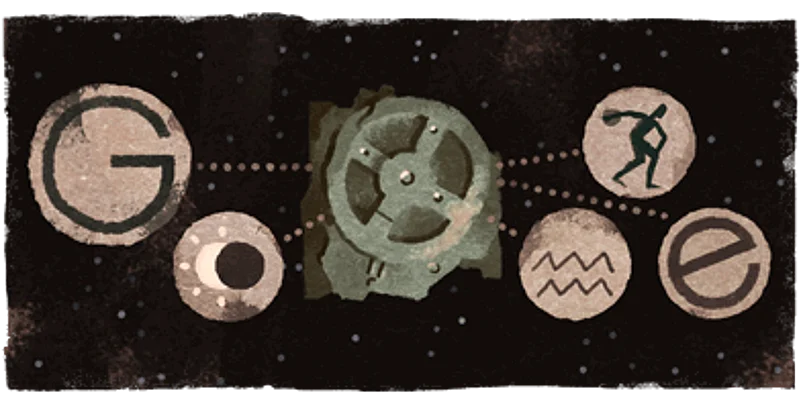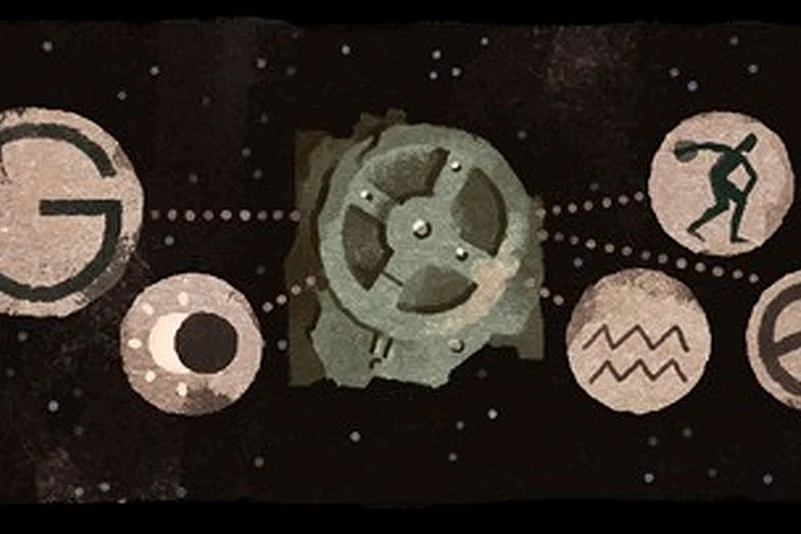In 1901, a group of divers looking for sponges happened upon a 2000 year old shipwreck off the Greek island of Antikythera. This shipwreck contained multiple treasures, including beautiful vases, pots, jewelry and even a bronze statue of an ancient philosopher.
But what has intrigued subsequent generations the most is a mysterious artefact salvaged from among the 2000 year old treasure trove — an amalgamation of brass gears and dials mounted in a case the size of a mantel clock. It was dubbed the ‘Antikythera Mechanism’ by scientists and it is this mysterious mechanism that is being celebrated today with a Google Doodle.

Hailed as the ‘world’s first computer’, the Antikythera Mechanism is used to predict the position of planets and stars in the sky depending on the calender month. Within the device, moving the main gear, representing the calender month, would lead to the movement of many separate smaller gears, representing the motions of the planets, sun and moon.
Like the programming of today’s modern computers is written in digital code—a series of ones and zeros—the Antikythera Mechanism has its code determined by the mathematical ratios of its gears. This mechanical complexity is an astonishing accomplishment on the part of Greek technology, being unrivalled for the next 1000 years up till the advent of medieval clocks.
Princeton science historian Derek J. de Solla Price, who provided the most thorough scientific analysis of the contraption to date, wrote in 1959: “It is a bit frightening, to know that just before the fall of their great civilisation, the ancient Greeks had come so close to our age, not only in their thought but also in their scientific technology”. Today’s Google Doodle pays tribute to this “frightening” invention that stunned the world with its precocity.
The salvaged remains of the original artefact are currently held at the National Archaelogical Museum in Athens, Greece.















